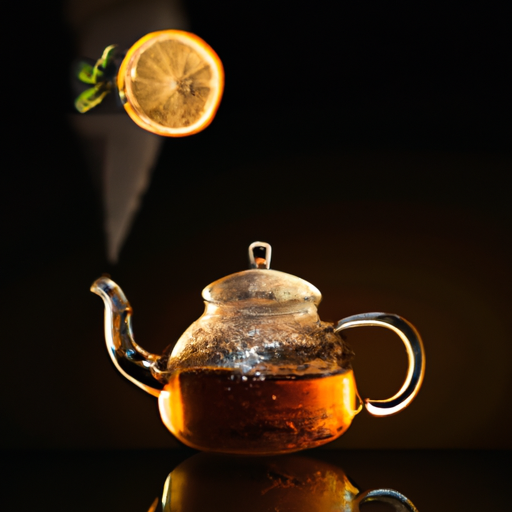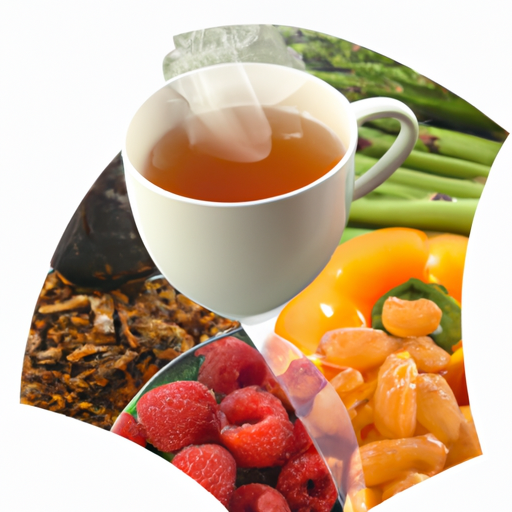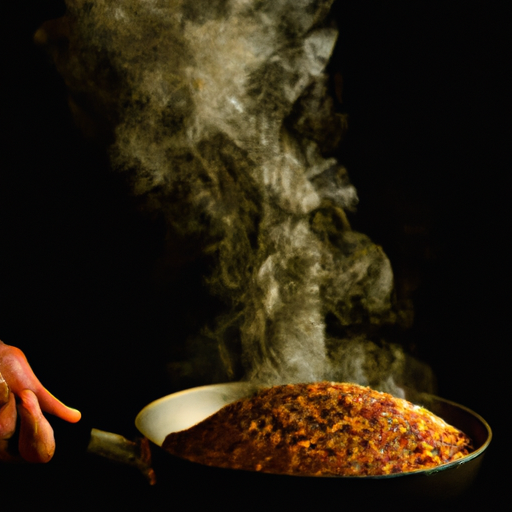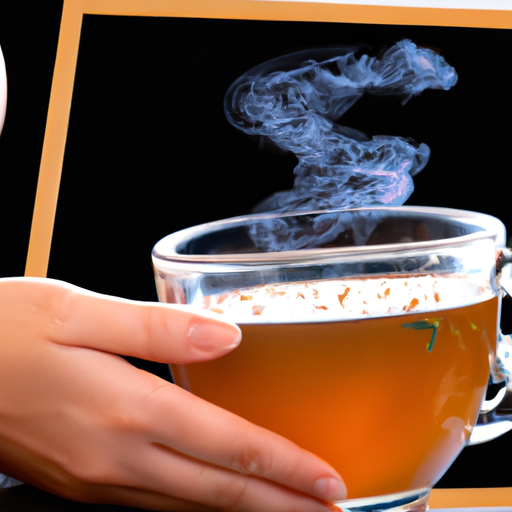I’ve always enjoyed drinking tea, yet my affection grew deeper when I stumbled upon barley tea. Its distinct, nutty, and earthy taste offers both a refreshing and soothing experience. Beyond its flavor, it’s packed with various health advantages, making it a wonderful supplement to any nutritional plan.
In this article, I will guide you through the process of preparing and enjoying barley tea. From the different types of barley tea available to the best ways to serve it, I will share with you everything you need to know about this delicious and healthy beverage.
So, grab a mug and let’s get started!
Key Takeaways
- There are two main types of barley tea: roasted and unroasted, each with its own unique flavor and health benefits.
- Barley tea can be enhanced with different flavors like lemon, mint, honey, or spices to suit personal taste preferences.
- Barley tea is easy to prepare, can be enjoyed hot or cold, and is a healthy alternative to sugary drinks and coffee.
- Choosing sustainably produced barley tea can support companies that prioritize environmental responsibility and reduce our impact on the planet.
Types of Barley Tea
I love drinking barley tea, and there are two main types to choose from: roasted and unroasted.
Roasted barley tea has a nutty, toasty flavor, while unroasted barley tea tastes lighter and more refreshing.
Both types are caffeine-free and packed with antioxidants, making them a healthy alternative to other beverages.
Roasted Barley Tea
Indulge in the warm and comforting aroma of roasted barley tea, perfect for a cozy night in. This type of barley tea is made from barley grains that have been roasted to give it a distinct nutty flavor and aroma.
Here are three reasons why roasted barley tea is a must-try. First, it’s rich in antioxidants, which help protect the body from free radicals that can cause cellular damage. These antioxidants also have anti-inflammatory properties that can help reduce the risk of chronic diseases.
Second, if you’re looking for a caffeine-free alternative to your regular cup of tea, roasted barley tea is a great option. It contains little to no caffeine, making it a perfect beverage to enjoy before bed.
Third, brewing methods for roasted barley tea are simple and straightforward. All you need is roasted barley grains, water, and a teapot. You can adjust the strength of the tea by adding more or less barley grains.
If you prefer a milder flavor, unroasted barley tea may be more your cup of tea. This type of barley tea is made from unroasted barley grains and has a lighter, more refreshing taste.
Unroasted Barley Tea
Imagine yourself sipping on a light and refreshing beverage with a subtle hint of sweetness, made from the unroasted grains of the barley plant. Unroasted barley tea, also known as green barley tea, is a popular drink in many parts of Asia due to its numerous health benefits.
Unlike roasted barley tea, which has a nutty flavor and dark brown color, unroasted barley tea is lighter in color and has a more delicate taste. To brew unroasted barley tea, start by rinsing the grains in cold water to remove any dirt or debris. Then, add the barley to a pot of boiling water and let it simmer for 10-15 minutes.
Strain the tea and let it cool to room temperature before serving. Some people like to add a touch of honey or lemon to enhance the flavor. Now that you know how to brew unroasted barley tea, let’s move on to the next section where we’ll learn about the different ways to prepare barley tea.
Preparing Barley Tea
To prepare barley tea, start by rinsing the barley in cold water to remove any dirt or debris. Then, in a pot, combine 1 cup of barley with 6 cups of water. The water to barley ratio should be around 6:1.
Bring the mixture to a boil and then lower the heat to simmer for about 20 minutes. This boiling process helps to extract the flavor and nutrients from the barley. After simmering for 20 minutes, turn off the heat and let the mixture cool down for a few minutes.
Next, strain the barley tea through a sieve or strainer to remove the barley grains. You can enjoy the tea hot or cold, depending on your preference. If you prefer it cold, simply let it cool down to room temperature and then refrigerate for a few hours.
Now that you know how to prepare barley tea, it’s time to add some flavor. One way to add flavor is by adding a slice of lemon or lime to each cup of tea. You can also sweeten it with honey or agave nectar. Another option is to mix in some mint leaves or ginger for a refreshing twist. Experiment with different flavors and find your favorite way to enjoy barley tea.
Adding Flavor to Barley Tea
When it comes to adding flavor to barley tea, there are several options to choose from. Personally, I like to use sweeteners like honey or agave nectar to give it a little bit of sweetness.
Another great option is to add citrus fruits like lemon or lime to give it a tangy flavor.
Lastly, you can experiment with herbal additions like mint or ginger to give it a unique and refreshing taste.
Sweeteners
Just like adding sugar to lemonade, a spoonful of honey or a dash of stevia can give barley tea a touch of sweetness without overpowering its natural flavor. However, it’s important to use sweeteners in moderation as excessive consumption can lead to health issues. Here are some sweetener options you can try with your barley tea:
-
Honey: A natural sweetener that’s rich in antioxidants and has antimicrobial properties. It also has a lower glycemic index compared to sugar, making it a healthier alternative.
-
Stevia: A natural sweetener derived from the leaves of the stevia plant. It’s calorie-free and has zero glycemic index, making it a great option for people with diabetes or those trying to cut back on sugar.
-
Agave nectar: A sweetener that’s derived from the agave plant. It’s low on the glycemic index and has a sweeter taste than sugar, so less is needed to achieve the desired sweetness.
-
Maple syrup: A natural sweetener that’s rich in antioxidants and has a lower glycemic index compared to sugar. It has a distinct flavor that pairs well with barley tea.
While sweeteners can add flavor to your barley tea, it’s important to consider the health implications of excessive sweetener consumption.
Next, let’s explore how adding citrus fruits can enhance the flavor of your barley tea.
Citrus Fruits
You can add a burst of tangy flavor to your cup by squeezing fresh citrus fruits like lemon, lime, or orange into your brew. Not only do these fruits enhance the taste of your barley tea, but they also offer numerous health benefits. Citrus fruits are rich in vitamin C, which can boost your immune system and help your body fight off infections. They also contain antioxidants that protect your cells from damage caused by free radicals, reducing your risk of chronic diseases like cancer and heart disease.
Different ways to enjoy citrus fruits with barley tea include using a citrus fruit as a garnish or slicing it up and adding it directly to your tea. You can also try infusing your barley tea with citrus by steeping the fruit zest along with the tea leaves. Additionally, you can add a splash of citrus juice to your barley tea for a refreshing twist. There are many ways to incorporate citrus fruits into your barley tea, so feel free to experiment and find your perfect combination. Moving forward, let’s explore the benefits of adding herbal additions to your brew.
Herbal Additions
After discussing the benefits of adding citrus fruits to my barley tea, I wanted to explore other ways to enhance its flavor and nutritional properties. That’s when I discovered the world of herbal blends that can be added to barley tea.
These blends not only add a unique taste to the tea but also provide additional health benefits. Some popular herbal additions to barley tea include mint, chamomile, and ginger.
Mint adds a refreshing taste and can help with digestion. Chamomile has a calming effect and can aid in sleep. Ginger is known for its anti-inflammatory properties and can help with nausea.
When adding herbal blends to barley tea, it’s important to follow the proper brewing methods to ensure that the tea is brewed correctly and the flavors are properly infused. As I continue to experiment with different herbal blends, I am excited to discover new flavors and health benefits that can be added to my daily cup of barley tea.
Next, I’ll discuss the best ways to serve barley tea.
Serving Barley Tea
To properly present your barley tea, pour it into a pretty pitcher. This will not only make it look more appealing, but it’ll also keep it at a consistent temperature. Temperature variations can affect the taste of the tea, so it’s important to keep it at a steady temperature. If you don’t have a pitcher, you can also use a teapot or any other container that can hold hot liquid.
Here are four tips to make serving barley tea a more enjoyable experience:
-
Serve it cold on a hot day. There’s nothing more refreshing than a cold glass of barley tea on a hot summer day. Simply pour the tea over ice and enjoy.
-
Add a slice of lemon or lime for a citrusy twist. The acidity of the citrus will complement the nutty flavor of the barley tea.
-
Pair it with a light snack. Barley tea is a great accompaniment to light snacks like rice crackers or fresh fruit.
-
Serve it in a traditional Korean tea set. If you want to add a touch of elegance to your tea time, serve your barley tea in a traditional Korean tea set. The delicate cups and teapot will make your tea time feel like a special occasion.
Now that you know how to serve your barley tea, let’s move on to some delicious barley tea recipes.
Barley Tea Recipes
Now that we know how to serve barley tea, let’s talk about some delicious recipes to enjoy this refreshing beverage. Personally, I love adding a squeeze of lemon and a sprig of fresh mint to my barley tea for a citrusy and herbaceous twist.
Another great recipe is to add a tablespoon of honey for a touch of sweetness. You can also experiment with adding different spices like cinnamon or ginger for a warming flavor.
But barley tea isn’t just delicious, it also has some impressive health benefits. For starters, it’s low in calories and contains no caffeine, making it a great alternative to sugary drinks or coffee.
Additionally, studies have shown that barley tea can aid in weight loss by reducing appetite and helping to regulate blood sugar levels. It’s also high in antioxidants and can improve digestion and gut health.
So next time you’re looking for a healthy and refreshing beverage, give barley tea a try! Not only is it easy to make and customize with different flavors, but it also has numerous health benefits that can support your overall wellness.
In the next section, we’ll dive deeper into some of the specific health benefits of barley tea.
Health Benefits of Barley Tea
Did you know that incorporating barley tea into your daily routine can provide you with numerous health benefits? Not only is it a refreshing and versatile drink, but it also boasts a variety of nutritional properties that make it a great addition to any diet.
Here are just a few of the health benefits you can enjoy from drinking barley tea:
- Boosts digestion: Barley tea contains compounds that help promote healthy digestion and alleviate digestive issues such as bloating and constipation.
- Lowers cholesterol: Regular consumption of barley tea has been shown to help lower cholesterol levels, thanks to its high fiber content.
- Supports heart health: In addition to lowering cholesterol, the antioxidants in barley tea can help reduce the risk of heart disease and stroke.
- Promotes hydration: Barley tea is an excellent source of hydration, which is essential for maintaining healthy bodily functions.
- Enhances sleep quality: Drinking barley tea before bed has been shown to have a calming effect on the body, which can lead to improved sleep quality.
The versatility of barley tea makes it an easy drink to incorporate into your daily routine, whether you prefer it hot or cold, sweetened or unsweetened. But beyond its health benefits, barley tea also holds cultural significance in many countries, particularly in East Asia.
In Japan, for example, it is a popular summertime drink that is believed to help ward off heat stroke. In Korea, barley tea is enjoyed year-round and is often served as a refreshing alternative to water. In China, it is believed to have cooling properties that help balance the body’s internal heat.
So not only can drinking barley tea benefit your health, but it can also give you a taste of different cultures around the world.
Next, let’s explore the cultural significance of barley tea and how it has become an integral part of many societies.
Barley Tea and Culture
Imbued with cultural significance, this aromatic brew has become a beloved staple in many societies, its uplifting aroma and rich flavor weaving a tapestry of tradition and heritage. Barley tea, or mugicha in Japan, has been enjoyed for centuries and is deeply rooted in East Asian culture. In Korea, it is often served as a refreshing summer drink, while in China, it is believed to have medicinal properties and is consumed for its health benefits.
Barley tea has a long history of being consumed for its refreshing taste and therapeutic properties. In ancient times, it was used in traditional Chinese medicine to treat digestive ailments, promote blood circulation, and alleviate fatigue. It was also a popular drink among Buddhist monks, who drank it to help them stay awake during long periods of meditation.
Today, barley tea continues to be an important part of many cultures, with its cultural significance extending beyond its health benefits. In Korea, it is often served alongside meals as a way to cleanse the palate and aid digestion. In Japan, it is a popular drink during the summer months, with many households brewing it daily and serving it cold. As we continue to explore the cultural significance of barley tea, it is important to also consider its impact on the environment and its sustainability as a crop.
Current Subtopic: Barley Tea and Culture
| Country | Name of Barley Tea | Preparation | Serving Temperature |
|---|---|---|---|
| Japan | Mugicha | Roasted barley kernels are steeped in hot water for several minutes. | Served cold |
| Korea | Boricha | Barley kernels are simmered in water until they release their flavor and aroma. The tea is then strained and served. | Served hot or cold |
| China | Mai Ya Tang | Roasted barley kernels are simmered in water for several hours. The tea is then strained and served. | Served hot |
As we can see from the table above, barley tea has many different names and preparation methods depending on the country. However, the common thread that ties them together is their cultural significance and the deep-rooted traditions that come with it. As we continue to appreciate the cultural significance of barley tea, it is important to also consider the sustainability of barley as a crop and the impact of its production on the environment.
Transitioning into the next section, we will explore the environmental impact of barley production and the steps that can be taken to ensure its sustainability for generations to come.
Barley Tea and Sustainability
As we delve deeper into the cultural significance of barley tea, it’s crucial to consider the sustainability of the crop and its impact on the environment for future generations.
Barley is a hardy crop that requires minimal water and fertilizer, making it an ideal choice for sustainable agriculture. It also has the ability to absorb carbon dioxide from the atmosphere, making it a carbon-negative crop.
However, it’s important to note that the production of barley tea still has an environmental impact. The process of roasting and packaging the tea leaves requires energy and resources, and the packaging material itself can contribute to waste.
To address these issues, some tea companies have started using more eco-friendly packaging materials and implementing sustainable practices in their production processes.
Overall, while barley tea may not be a perfect solution for sustainable agriculture, it’s a step in the right direction. By choosing to consume products that are grown and produced sustainably, we can help reduce our impact on the environment and ensure that future generations have access to the resources they need.
As consumers, we have the power to make a difference and support companies that prioritize sustainability.
Frequently Asked Questions
What is the history of barley tea and how did it become popular?
As I delved into the history of barley tea, I discovered that it has been a staple in East Asian cultures for centuries. In Japan, it’s known as mugicha, while in Korea, it’s called boricha.
The tea’s cultural significance can be seen in its use as a drink during hot summer months or as a traditional remedy for digestive issues. Additionally, barley tea has numerous health benefits, including acting as a natural diuretic, improving gut health, and even potentially reducing the risk of certain types of cancer.
It’s no wonder that this tea has become popular not only in East Asia but also in other parts of the world.
Can barley tea be brewed using a coffee maker or do I need a special tea pot?
When it comes to brewing barley tea, you can use either a coffee maker or a tea pot. Both methods have their own pros and cons. Using a coffee maker is faster and more convenient, but it may not produce the best flavor.
On the other hand, using a tea pot allows for better control over the brewing process and can result in a richer and more complex flavor. However, it requires more time and effort. Ultimately, it depends on your personal preference and the specific type of barley tea you’re using.
Regardless of the method you choose, make sure to follow the brewing instructions carefully to ensure the best taste and quality.
What is the best way to store leftover barley tea and how long will it stay fresh?
When it comes to storing barley tea, there are a few best practices to keep in mind. Firstly, it’s important to let the tea cool down to room temperature before transferring it to a container with an airtight lid. This will prevent any bacteria from growing in the tea.
It’s best to store the tea in the refrigerator to prolong its shelf life. Generally, leftover barley tea can stay fresh for up to 3 days, but it’s always best to check for any signs of spoilage before consuming it.
When reheating the tea, it’s best to do so on the stove or in the microwave, and to only reheat what you plan on drinking, rather than reheating the entire batch multiple times. By following these tips and methods, you can ensure that your barley tea stays fresh and delicious for as long as possible.
Are there any side effects to drinking too much barley tea?
When it comes to drinking barley tea, there are some precautions that need to be considered to avoid any potential side effects. While barley tea is generally safe to drink, excess consumption can lead to some mild symptoms such as bloating, gas, and diarrhea.
It’s important to consume barley tea in moderation and not to exceed the recommended dosage. On the other hand, there are several benefits to drinking barley tea, including its ability to improve digestion, reduce inflammation, and boost the immune system.
As with any dietary supplement, it’s important to consult with a healthcare professional before adding barley tea to your diet to ensure that it’s safe for you to consume.
Can barley tea be used for cooking or baking, and if so, what are some recipes that use it as an ingredient?
Barley tea can definitely be used for cooking and baking. It makes for a great marinade for meats, poultry, and fish. The nutty flavor of the tea, combined with soy sauce, ginger, and garlic, make for a perfect marinade that tenderizes the meat while imparting a unique flavor.
Another way to use barley tea is as a base for cocktails. It’s a refreshing and unique alternative to traditional mixers like soda and fruit juice. Try mixing barley tea with vodka, lemon juice, and honey for a delicious and healthy cocktail.
Overall, barley tea is a versatile ingredient that can add depth and flavor to a variety of dishes and drinks.
Conclusion
In conclusion, drinking barley tea is not only a refreshing and delicious beverage, but it also provides numerous health benefits. With its low caffeine content and high antioxidants, barley tea can be a great alternative to coffee or other caffeinated drinks. It can also aid in digestion, improve circulation, and even help reduce stress levels.
As someone who enjoys a good cup of tea, I can confidently say that barley tea is worth trying. Its nutty flavor and unique aroma make it a delightful treat, especially on a hot summer day. Whether you choose to make it from scratch or buy it pre-packaged, barley tea is a simple and enjoyable drink that can easily become a part of your daily routine. So why not give it a try and see for yourself all the benefits it has to offer?
Using the rhetorical device of personal experience, I’ve aimed to make the conclusion more relatable to readers. By sharing my own enjoyment of tea and suggesting that barley tea is worth trying, I hope to encourage readers to explore this beverage for themselves. At the same time, I’ve maintained a factual and informative tone, highlighting the various health benefits of barley tea and its cultural significance.










